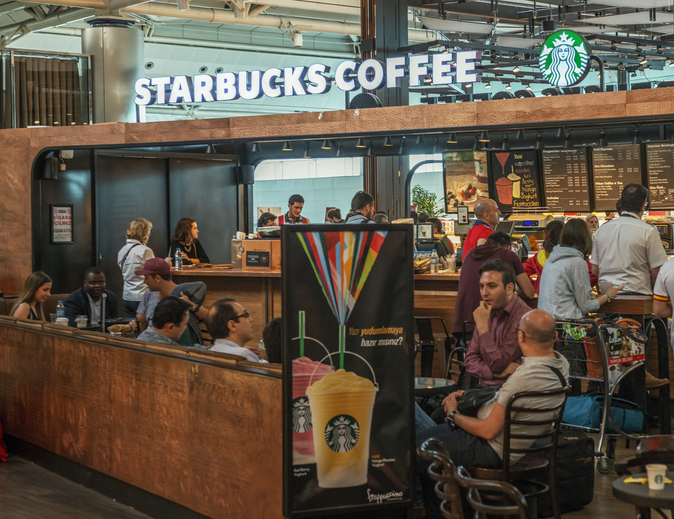Starbucks said Friday it is creating a more accessible store experience across its U.S. store portfolio through an Inclusive Spaces Framework. The strategy defines how the brand will help expand independence, choice, and ease for customers and employees, according to the coffee chain.
The Inclusive Spaces Framework was created in partnership with a community of customers, partners, and accessibility experts to develop scalable solutions for retail spaces. Moving forward, all newly built and renovated Starbucks company-operated stores in the U.S. will begin to incorporate the framework.
“At Starbucks, we have challenged ourselves to imagine what’s possible when we take a closer look at the many ways our partners and customers interact with us and experience our stores every day,” said Katie Young, SVP of store operations, in a statement. “Building and scaling an Inclusive Store Framework is central to our mission of connection and will lead to greater access for all.”
The first store to be built using the inclusive design framework opened in Washington, D.C., on February 16 and features items such as optimized acoustics and lighting for improved visual and audible communication for customers and accessible equipment designs for an improved employee experience.
“[Starbucks'] opening of their new store built with inclusive design elements is a big moment as we try to make retail spaces more accessible and inclusive,” said Tony Coelho, a former U.S. congressman, and primary author and sponsor of the Americans with Disabilities Act, in a statement. “We have to go beyond just what is required to put accessibility and inclusion first to ensure all people feel like they belong in community spaces.”
Some inclusive features are as follows:
• The Point-of-Sale system is portable with an adjustable angle stand for better visibility, has an updated layout, offers voice assist and screen magnification, shows images of menu items to support language diversity, and provides visual order confirmation for order accuracy.
• Customer status boards will offer customers a visual update on where their order is in the process, and when it’s ready to be picked up.
• Wherever possible, doors to store entrances will be power-operated and include a longer vertical push button that is easier to activate from more heights and angles, designed to reduce the effort required to open the door.
• Stores will use materials to reduce unwanted background noise and reverberation that can interfere with assistive devices like hearing aids, and lighting that minimizes glare, shadow patterns and backlighting that can impede visual communication.
• The newest Starbucks Clover Vertica brewer was built to include a more accessible design.
• Store designs will create a continuous, unobstructed pedestrian path, allowing people to easily travel through the store where possible.
• Counters will be lower with overhangs to accommodate wheelchair access and support better communication when picking up food and beverages.

